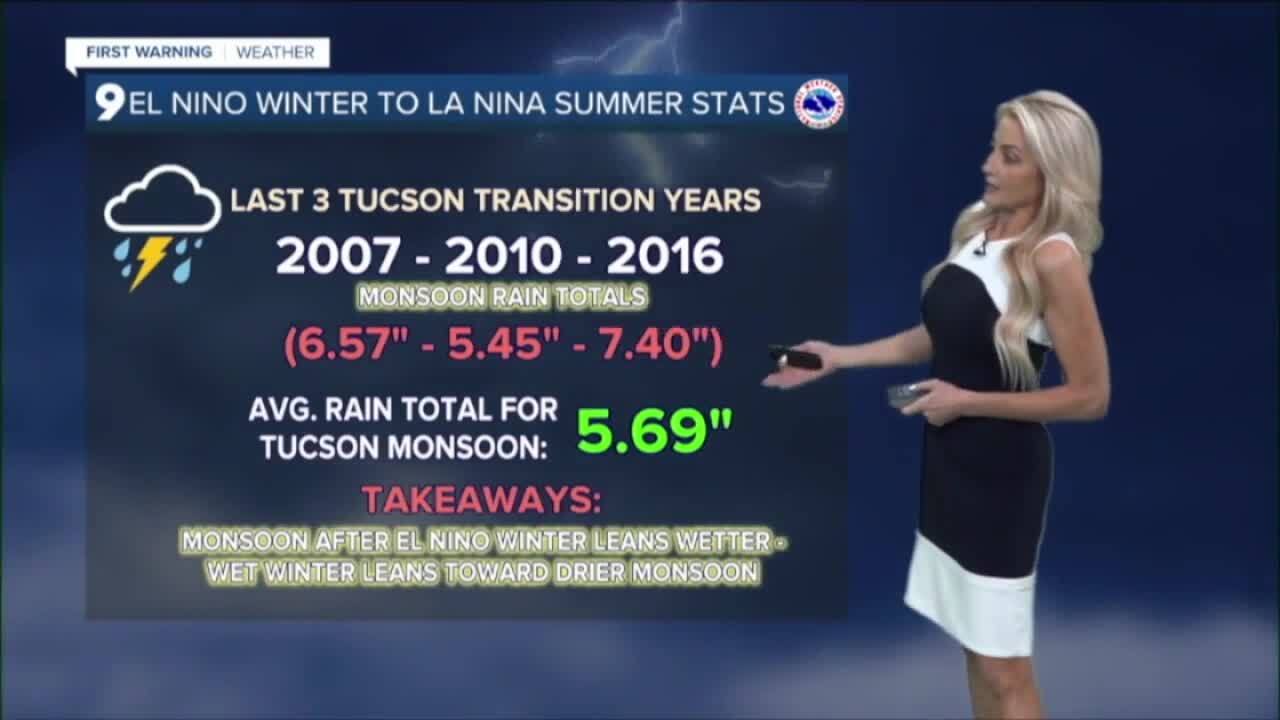TUCSON, Ariz. (KGUN) — El Niño and La Niña episodes have been shown through numerous studies to have widespread weather impacts, especially on larger scale weather patterns.
But what about their impacts on a more down-scaled basis?
One of the questions we get asked every year is what is the difference between El Niño and La Niña, and how do they impact our Monsoon?
El Niño is a warming of ocean waters in the central and eastern Pacific, which often leads to an increase in rainfall in this area. It also means less surface wind, and in some cases that can lead to a shift from easterly to westerly winds, which can often increase hurricane activity.

So essentially, the warmer the ocean water, the stronger the El Niño, which typically leads to cooler than average temperatures and wetter than average precipitation across the desert.


Now let us compare that to La Niña. La Niña is essentially the opposite of El Niño, meaning cooler than normal ocean waters, leading to stronger winds and usually less hurricane activity for the central and eastern Pacific. And when it comes to temperatures, La Niña typically leads to average desert temperatures, and drier winter months.


But there can also be what we call a neutral pattern, which means neither El Niño nor La Niña. Often, we have average—or close to average—sea surface temperatures, which results in normal hurricane activity and normal winds. A neutral pattern also typically means warmer than average temperatures across the desert, and average annual precipitation.


Want to know more? Check out Monsoon Watch 2024:
The last three transition years where we went from an El Niño Winter to a La Niña Summer were 2007, 2010, and 2016. Rain amounts during those years were either near normal, or well above normal compared to the average rain totals, which is just under 6” at Tucson International Airport.

In general, Monsoon after an El Niño winter typically leans wetter, and wet winters slightly lean to a drier Monsoon.
——-
April Madison is a KGUN 9 meteorologist. April started her media career in radio in the late 90's, while attending the University of Arizona. She was an Airborne Traffic Reporter and one-time disc jockey. After switching to television, she got the news bug and became interested in weather. Share your story ideas and important issues with April by emailing april.madison@kgun9.com or by connecting on Facebook, Instagram, and X.




